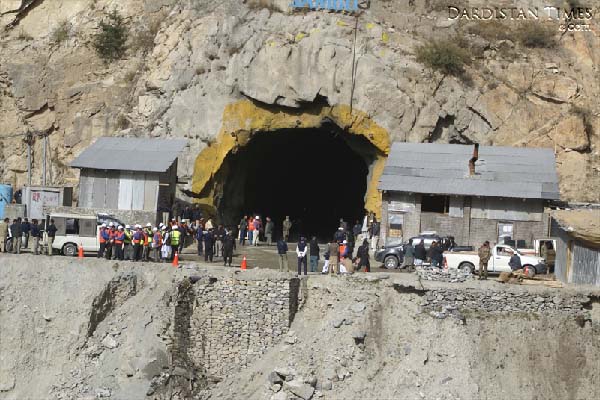The Lowari Tunnel project, once envisioned as a transformative link between Pakistan’s remote northern regions and the rest of the country, has become a symbol of mismanagement and cost overruns. Initially approved in 2004, the project aimed to provide all-weather access to Chitral and nearby districts, historically cut off during harsh winters. However, more than two decades later, the tunnel continues to face delays, cost escalations, and governance failures.
The Central Development Working Party (CDWP) this week reviewed a proposal to approve yet another cost revision for the project, this time raising the total estimated expenditure to Rs37 billion—an increase of 362% over the originally approved cost of Rs8 billion.
Officials revealed to The Express Tribune that the project documents submitted by the Ministry of Communications violated a three-year-old directive that had capped the cost at Rs28 billion and had called for formal closure of the scheme.
The Ministry of Communications requested an additional Rs10 billion in funding, but the Planning Commission agreed only to allocate Rs4 billion to clear pending liabilities. The project has already seen four previous revisions, largely driven by repeated decisions to expand its scope, including a major design change from a mini electric rail tunnel to a road tunnel. No consensus was reached in the meeting, and the CDWP returned the project for revision before it can be resubmitted to the Executive Committee of the National Economic Council (ECNEC).
Originally, the Lowari Tunnel project was planned as an 8.6-kilometre-long rail tunnel designed to transport cargo trucks via piggyback shuttle services. ECNEC approved this design in July 2004 at a cost of Rs8 billion. In subsequent years, significant alterations were made: the tunnel was converted into a two-lane road tunnel, the carriageway width was increased, and new infrastructure elements were added, leading to soaring costs. By 2016, the revised cost stood at Rs27 billion.
Despite these escalations, the tunnel is now operational and provides a critical link through the mountainous Lowari Pass, but financial mismanagement has continued to shadow the project. In 2022, ECNEC had directed a fact-finding inquiry into the project’s irregularities and ordered its formal closure, but no such inquiry was conducted, and the project remains open.
This case exemplifies a broader trend in Pakistan’s public sector development management. Despite limited fiscal space, the federal government continues to approve and fund projects—including those under provincial jurisdiction—often motivated by political considerations. This practice not only strains the Public Sector Development Programme (PSDP) but also breaches the National Fiscal Pact agreed upon with provinces under the International Monetary Fund (IMF) programme.
During the same CDWP meeting, seven other development projects were also considered. Three projects, costing Rs10 billion, were approved, while four projects worth Rs91 billion were recommended for ECNEC’s final approval. Among the approved schemes was the Rs5 billion Gwadar Safe City initiative, a federally and provincially co-financed project aimed at improving public security in the strategically important port city. Another was a Rs13 billion road project in Sialkot to enhance connectivity to the National Highway (N-5), despite similar concerns about federal funding for provincial works.
The CDWP also referred a Rs16.2 billion plan for upgrading the Jhaljao–Bela Road to ECNEC, aiming to rehabilitate and improve transport efficiency in the region. Yet, the glaring issues surrounding the Lowari Tunnel project continue to highlight deep-rooted weaknesses in project planning, oversight, and fiscal discipline in Pakistan’s development ecosystem.




